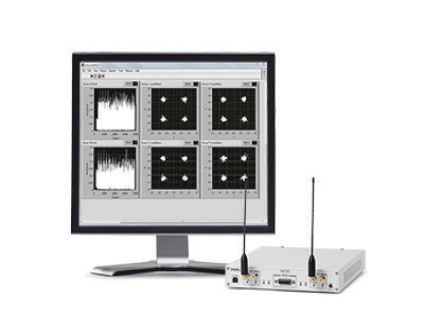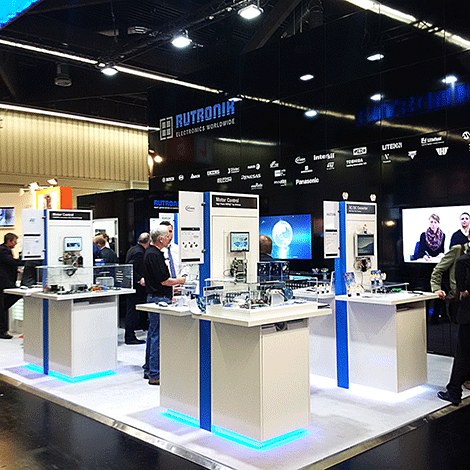5G will undoubtedly make our wireless networks evolve to levels never imagined, but its path will not be without obstacles.
Researchers must not only address the requirements for unprecedented wireless data speeds, but also find solutions for network latency and reaction while adapting to a thousand-fold increase in capacity. And as if that weren't enough, utility operators are requesting that these advancements consume less energy than existing infrastructure.
So how do we begin to solve these complex challenges? The answer lies in prototypes, and more specifically in the type of 5G prototypes that allow wireless system researchers to test experimental ideas using real systems in real world cases. These 5G prototypes, when built right, can lay the foundation for rapidly increasing a company's time to market.
Creation of a new standard
Acknowledging the large amount of speculation about the networks 5G, the world's standardization bodies, including 3GPP, have only recently started to bring concepts to life. Not surprisingly, the vision drawn by IMT-2020, NGMN and 3GPP is increasing. 5G researchers must now create the framework that will redefine our existence, from automobiles and transportation systems to manufacturing, energy, healthcare, and more.
5G, the world's standardization bodies, including 3GPP, have only recently started to bring concepts to life. Not surprisingly, the vision drawn by IMT-2020, NGMN and 3GPP is increasing. 5G researchers must now create the framework that will redefine our existence, from automobiles and transportation systems to manufacturing, energy, healthcare, and more.
To that end, researchers are adopting new design techniques to help with the difficult task of defining, developing, and deploying 5G technologies in a random access network. Most acknowledge that conventional approaches to researching 5G technologies take too long and incur significant costs. Therefore, prototyping and proof of concept earlier in the process allows for faster time to market. Thyaga Nandagopal, program director at the National Science Foundation, who noted the importance of testbeds in enabling research, said: "A viable prototype is increasingly the critical element in determining the success or failure of a particular concept."
Marking a new route through research
To speed up the time it takes to produce a working prototype, many researchers have adopted a platform-based design technique that encompasses a unified design flow. It starts with math and simulation and then maps the algorithm into a working system and hardware.
Consider Samsung, which has built one of the world's first demonstrators of multi-antenna technology with a Base Station (BTS) that includes 32 antenna elements called Full-Dimension MIMO, or FD-MIMO. FD-MIMO uses a 2D array of antennas to create a 3D channel space. With FD-MIMO, service operators can place antenna arrays on elevated positions, such as buildings or poles, and aim antenna beams at users on the ground or in adjacent buildings to consistently deliver better data rates.
Researchers at Lund University in Sweden have taken this multi-antenna concept to the next level with their Massive MIMO prototype. Massive MIMO increases the number of antennas in a cellular BTS to hundreds. Consisting of low-cost technology, the array of antenna elements focuses power directly on the user, while allowing the hundreds of antennas to better detect weak signals from mobile devices. In addition, Massive MIMO uses linear coding techniques to simplify processing on the BTS.
As the number of BTS antennas improving the data experience for mobile users increases, we can see theory confirm that Massive MIMO can also significantly reduce the power consumed by the BTS and mobile devices. Since multiple low cost BTS antennas transmit less power overall than with the monolithic technique, the power consumed by the BTS can be reduced by a factor of 10 or more.
Fundamentally, enhanced data rates and increased capacity are constrained by spectrum, based on Shannon's theory of channel capacity. Increased spectrum results in higher data speeds, helping service operators to accommodate to more users. Thus, the world's service operators have paid billions of dollars for spectrum to serve their customers, but the spectrum currently available below 6 GHz has all but stopped working. The researchers are now investigating the possibility of deploying cellular networks above 6 GHz, specifically in the mmWave bands.
to more users. Thus, the world's service operators have paid billions of dollars for spectrum to serve their customers, but the spectrum currently available below 6 GHz has all but stopped working. The researchers are now investigating the possibility of deploying cellular networks above 6 GHz, specifically in the mmWave bands.
It should be noted that mmWave spectrum is plentiful and lightly licensed, meaning it is accessible to service operators around the world. Professor Ted Rappaport of New York University Wireless has been investigating mmWave as a possible evolution path for mobile networks since the mid-2000s. His pioneering work measuring channels has caused researchers around the world to reconsider their assumptions that the networks mmWave mobile phones are impractical or unfeasible.
mmWave mobile phones are impractical or unfeasible.
In addition, Nokia Networks researchers are also investigating mmWave technologies, and early results are encouraging. In 2015 alone, Nokia Networks demonstrated a fully functional mmWave prototype that offers the highest speeds ever recorded for mobile access. Nokia Networks' prototype, consisting of a BTS and data transferred in a UE-coherent manner at speeds of more than 10 Gbps at 73,5 GHz. Nokia Networks' achievements paint a bright future for mmWave and 5G.
The future is here
5G promises many exciting new developments to further improve our lives through increased connectivity and offering great economic value. But for us to take advantage of these advantages, researchers need a faster path to prototyping. Traditional techniques have proven to be too expensive and time consuming, so the world is starting to lose patience. A platform-based design technique promises the ability to deliver these new developments more quickly, as researchers at places like Lund University, Nokia Networks, NYU Wireless, and Samsung are already demonstrating. It's time to join this wave of innovation and see where it takes us next.






